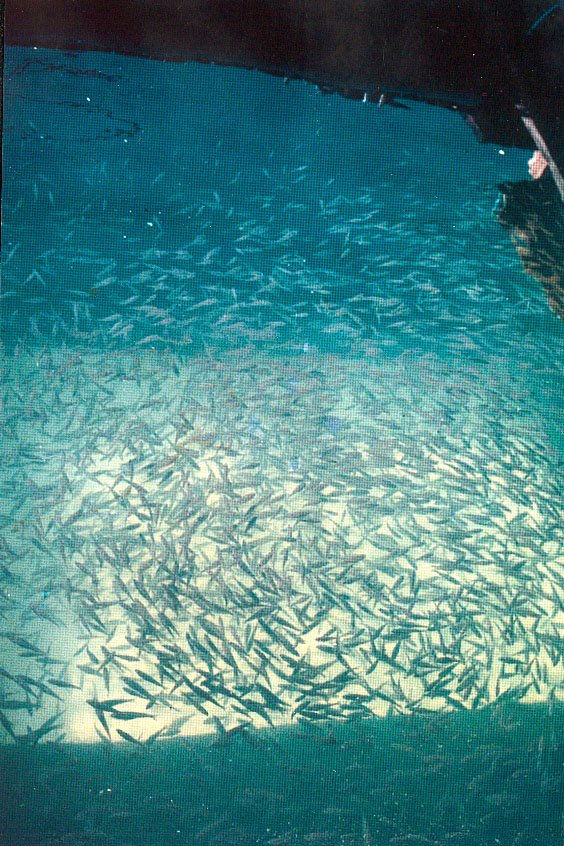Species Cultured
Superior Raceways™ have been successfully used to cultivate yellow perch, bluegills, hybrid sunfish, catfish, trout, koi, walleye, bass, baitfish, and others. Sizes have ranged from very small fingerlings thru adult. It would be fair to say, as in most aquaculture operations, success of a particular species will relate directly to the schooling nature of the fish and the higher stocking densities that a species will tolerate.
Much of the information below regarding catfish is applicable to most species. If you are interested in a particular species, please contact us for additional information.
Harvesting
Harvesting of open pond-raised fish, such as in the catfish industry, can be a frustrating and expensive task for many reasons – especially if the pond isn’t drained. Even if drained, the likelihood of unwanted survivors in the deeper, muddy holes, is often the norm. The result, naturally, is a massive toll on the next planting of fingerlings, as the larger survivors dine at will.
Additionally, the less than perfect sorting practices used with pond-seined fish can result in significant stress on the smaller fish – often associated with delayed disease establishment
As we look at increasing environmental mandates daily, it becomes clear that the less water discharged from fish farms, the safer the farm will be from regulatory sanctions. Thus, minimizing pond draining related to harvesting is probably a good idea for many reasons.
Superior Raceways offer an outstanding opportunity to minimize pond draining (among other problems and expenses) by simply 'surfacing' a raceway during harvesting or for any other reason. By simply covering the inlet and exit holes with a piece of plastic, and pumping out the water, the raceway will begin to surface – as high as you wish and as fast as you pump.
With a little lifting of the belly ropes, starting on one end, you can easily crowd the fish to the deeper end, where they can be further crowded and lift-netted out.
In larger operations, the use of a crane-operated net with a larger semi-circular opening, instead of a fully round hoop, allows the net to conform to the raceway bottom. The net can then be dragged along the smooth bottom, crowding and netting the fish right up to the raceway end.
The result is a very economical, environmentally superior harvest by a team of as few as two people.




